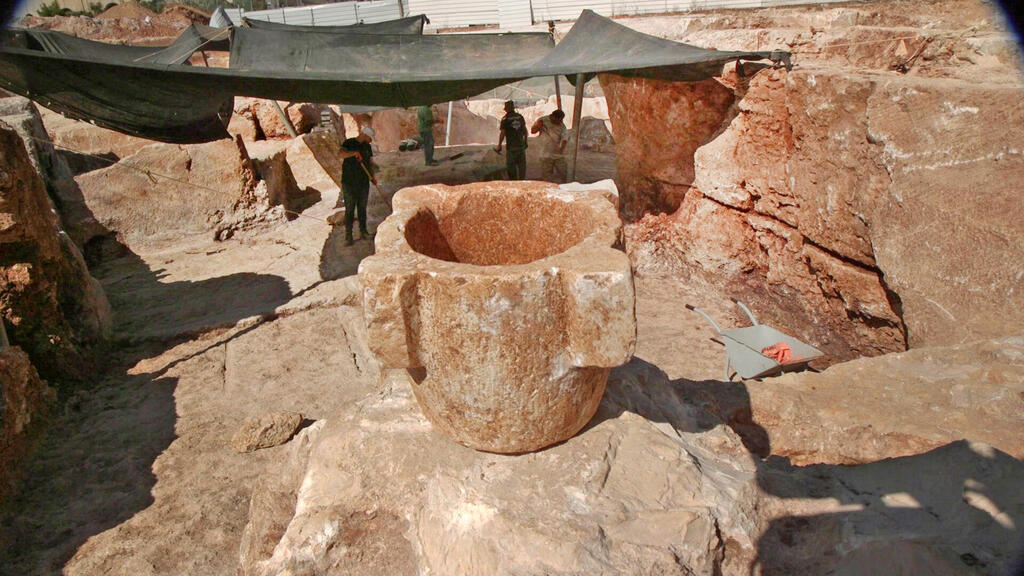Archaeologists discover massive Second Temple-era quarry in heart of Jerusalem
(Video: Israel Antiquities Authority)
A massive quarry dating back to the end of the Second Temple period has been uncovered in Jerusalem's Har Hotzvim industrial area, the Israel Antiquities Authority (IAA) announced on Thursday.
The site, covering approximately 37,670 square feet, is one of the largest quarries known in Jerusalem and part of an extensive quarrying field. Stone tools used by the Jewish population, which according to Jewish law did not transmit impurity, were also found at the site.
5 View gallery


Archaeologists discover massive Second Temple-era quarry in heart of Jerusalem
(Photo: Israel Antiquities Authority)
Archaeologists unearthed dozens of building stones of various sizes, along with quarrying and detachment channels, indicating the size of the rock blocks quarried. "Most of the building stones quarried here were massive rock slabs, reaching about 8.2 feet in length, 3.9 feet in width, and about 1.3 feet in thickness," said Michael Tchernin and Lera Shilov, the excavation directors.
"Each quarried block weighed around 5,512 pounds. The impressive size of the stones suggests they were intended for state construction projects in Jerusalem at the end of the Second Temple period, starting from King Herod the Great's reign (37-4 BCE)."
Herod's construction projects in Jerusalem included the expansion of the Temple Mount and the Temple itself. During his reign, many public buildings, palaces and fortifications were constructed, requiring vast quantities of high-quality building stones. The monumental construction continued during the reigns of Herod's successors, with the "Third Wall" built by King Agrippa I (37-44 CE) being particularly significant.
"We can cautiously assume that at least some of the building stones quarried here were intended to be used as paving slabs for Jerusalem's streets of that period," added Tchernin and Shilov. In a recent excavation in the City of David, archaeologists discovered a paved street ("Pilgrims' Way") from the same period, with paving stones identical in size and composition to those found in the Har Hotzvim quarry.
In one corner of the quarry, archaeologists found a complete stone tool, hidden for 2,000 years. "This is a purification stone vessel of a type used by the Jewish population during the Second Temple period," Shilov explained. "It may have been crafted on-site or brought specifically to serve the quarriers."
IAA Jerusalem District Archaeologist Dr. Amit Re'em said, "We are working tirelessly to integrate the quarry into the planned commercial complex, allowing the public to appreciate this incredible stone quarrying enterprise for Jerusalem during the Second Temple period."
IAA Director Eli Escusido commented on the site excavations, funded by the Vitania Company. "The exposure of this immense quarry just before Tisha B'Av is symbolic and moving. The special stone tools discovered here will be displayed to families at the Jay and Jeanie Schottenstein National Campus for the Archaeology of Israel in Jerusalem, now open to the public. I invite everyone to join our tours and encounter a piece of history emerging from the ground," he said.








